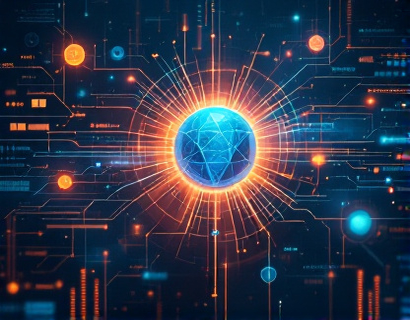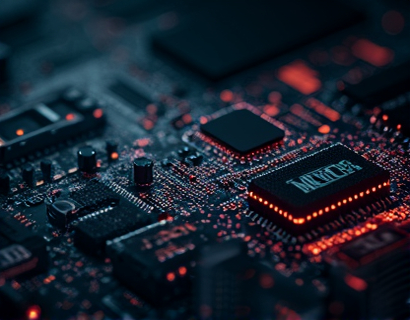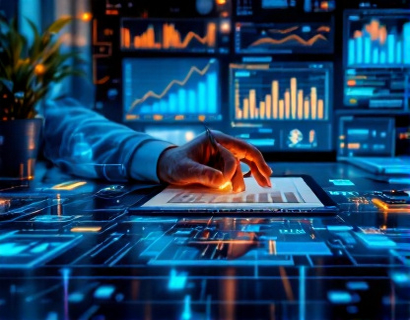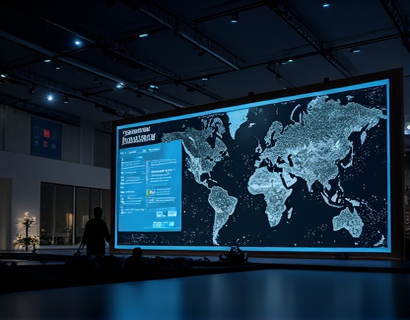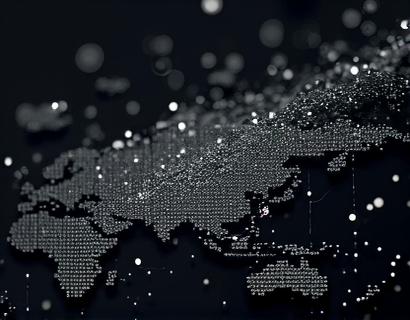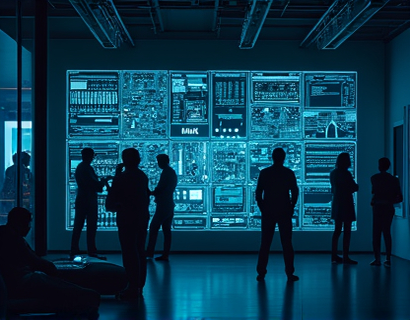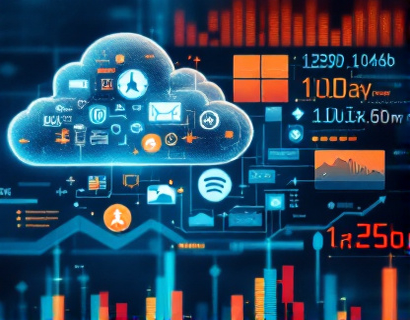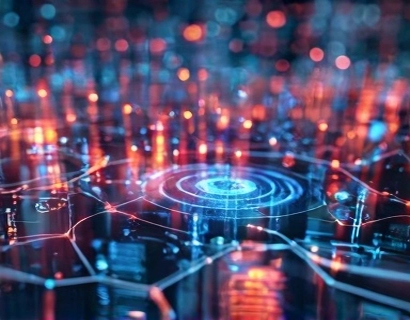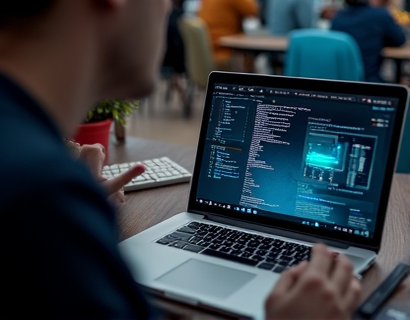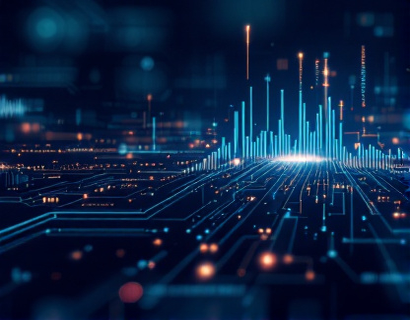Decentralized Productivity: Turbo-Charged with AI and Crypto Integration
The intersection of artificial intelligence and cryptocurrency is giving birth to a new era of decentralized productivity tools. These cutting-edge technologies are not just evolving independently but are merging to create advanced systems that significantly enhance efficiency and redefine user experience. This article delves into the transformative impact of this fusion, exploring how AI and crypto are revolutionizing the way we work and interact with digital solutions. Whether you are a tech enthusiast, a productivity professional, or an early adopter of digital innovations, understanding these developments is crucial for staying ahead in the rapidly changing digital landscape.
Understanding Decentralization in Productivity Tools
Decentralization, at its core, refers to the distribution of functions, processes, or activities away from a central authority. In the context of productivity tools, this means moving away from centralized platforms controlled by a single entity to a more distributed and democratic system. Decentralized applications, or dApps, leverage blockchain technology to ensure transparency, security, and user control. This shift is particularly significant for productivity tools, as it allows users to collaborate and manage tasks without relying on a central server or intermediary, reducing bottlenecks and enhancing reliability.
One of the key benefits of decentralized productivity tools is the elimination of single points of failure. Traditional centralized systems can be vulnerable to outages, hacks, or censorship, but decentralized systems distribute these risks across a network. This not only improves security but also ensures that productivity tools remain accessible even in adverse conditions. For instance, a decentralized project management tool can continue to function even if some nodes in the network go down, ensuring that teams remain productive and connected.
AI: The Brain Behind Decentralized Productivity
Artificial intelligence plays a pivotal role in enhancing the capabilities of decentralized productivity tools. AI algorithms can process vast amounts of data, identify patterns, and make predictions, all of which are invaluable in a decentralized environment. In the context of productivity, AI can automate routine tasks, provide intelligent recommendations, and optimize workflows. For example, an AI-powered task assignment system can analyze team members' availability, skills, and workload to suggest the most efficient task distribution, reducing manual intervention and increasing productivity.
Moreover, AI can enhance the user experience by personalizing tools to individual preferences and behaviors. Machine learning models can learn from user interactions and adapt the interface and features accordingly. This personalization ensures that each user has a tailored experience, making the tool more intuitive and efficient. In a decentralized setting, this personalization can be further enhanced by leveraging user data in a privacy-preserving manner, ensuring that the benefits of AI are realized without compromising user privacy.
Blockchain: The Backbone of Decentralized Productivity
Blockchain technology is the foundation upon which decentralized productivity tools are built. It provides a secure, transparent, and immutable ledger for recording transactions and data. In the context of productivity, blockchain ensures that all actions, such as task assignments, completions, and payments, are recorded in a tamper-proof manner. This transparency builds trust among users, as everyone can verify the status and history of tasks and transactions without relying on a central authority.
Smart contracts, self-executing contracts with the terms directly written into code, are another critical component of blockchain-based productivity tools. These contracts automatically enforce and execute agreements when predefined conditions are met. For instance, a smart contract can automatically release payment to a freelancer once the client confirms the completion of a task. This not only speeds up processes but also reduces the need for intermediaries, lowering costs and increasing efficiency.
Enhancing Collaboration and Communication
Decentralized productivity tools powered by AI and blockchain are redefining collaboration and communication. Traditional communication platforms often suffer from siloed information and lack of context, but decentralized tools can integrate various data sources and provide a unified view. For example, a decentralized communication platform can seamlessly integrate task management, file sharing, and messaging, all while ensuring that all data is securely and transparently stored on the blockchain.
AI can further enhance collaboration by providing real-time insights and recommendations. An AI-driven chatbot can assist teams by summarizing discussions, highlighting key points, and suggesting next steps. This not only streamlines communication but also ensures that important information is not lost and is easily accessible to all team members. Additionally, AI can detect and mitigate potential conflicts by analyzing communication patterns and suggesting constructive resolutions.
Optimizing Workflows with AI-Driven Automation
One of the most significant advantages of integrating AI with decentralized productivity tools is the ability to automate repetitive and time-consuming tasks. AI can analyze workflows and identify bottlenecks, then propose automated solutions to streamline processes. For instance, an AI system can automatically generate reports based on data from various sources, eliminating the need for manual data collection and analysis. This not only saves time but also reduces the risk of human error.
Moreover, AI can predict future workloads and resource requirements, allowing for proactive adjustments. By analyzing historical data and current trends, AI can forecast peak periods and suggest scaling up resources accordingly. This predictive capability ensures that teams are always prepared, maintaining high productivity levels without overburdening resources.
Ensuring Security and Privacy
Security and privacy are paramount in decentralized productivity tools, especially when sensitive information is involved. Blockchain's inherent security features, combined with AI-driven security measures, create a robust defense against threats. AI can monitor the network for unusual activities and potential security breaches, providing real-time alerts and automated responses to mitigate risks.
Privacy-preserving techniques, such as zero-knowledge proofs, allow users to verify information without revealing sensitive data. This ensures that personal and corporate information remains confidential while still benefiting from the transparency of blockchain. AI can also enhance privacy by anonymizing data and ensuring that only authorized users have access to specific information.
Case Studies and Real-World Applications
Several projects and platforms are already leveraging the power of AI and blockchain to revolutionize productivity. For example, a decentralized project management platform has implemented AI-driven task assignment and smart contracts for automated payment processing. Users have reported a significant reduction in project delays and a more transparent workflow. Another platform focuses on collaborative document editing, using AI to suggest edits and ensure version control, all while storing documents on a blockchain for immutable record-keeping.
These case studies demonstrate the practical benefits of integrating AI and blockchain in productivity tools. They not only enhance efficiency and user experience but also build trust and reliability among users. As more organizations adopt these technologies, we can expect to see even more innovative applications and improvements in the future.
Future Prospects and Challenges
The future of decentralized productivity tools powered by AI and blockchain is promising, but it also comes with challenges. One of the primary challenges is scalability. As the number of users and transactions increases, ensuring that the network remains fast and responsive is crucial. Blockchain technology is continually evolving to address these issues, with layer 2 solutions and more efficient consensus mechanisms being developed.
Another challenge is user adoption. While the potential benefits are clear, convincing users to switch from established centralized platforms requires education and demonstration of tangible advantages. Simplicity and ease of use are key factors in driving adoption. Additionally, regulatory considerations and compliance with data protection laws are important to address to ensure widespread acceptance.
Despite these challenges, the potential rewards are substantial. Decentralized productivity tools have the potential to create a more equitable, transparent, and efficient digital workspace. By leveraging the strengths of AI and blockchain, we can build a future where productivity tools are not only more powerful but also more accessible and user-friendly.
In conclusion, the fusion of AI and cryptocurrency is not just a technological trend but a transformative shift in how we approach productivity and collaboration. As these technologies continue to mature and integrate, we can expect to see a new generation of tools that redefine what is possible in the digital workplace. Whether you are a developer, a business leader, or a tech enthusiast, understanding and embracing these changes will be essential for thriving in the future of digital innovation.



